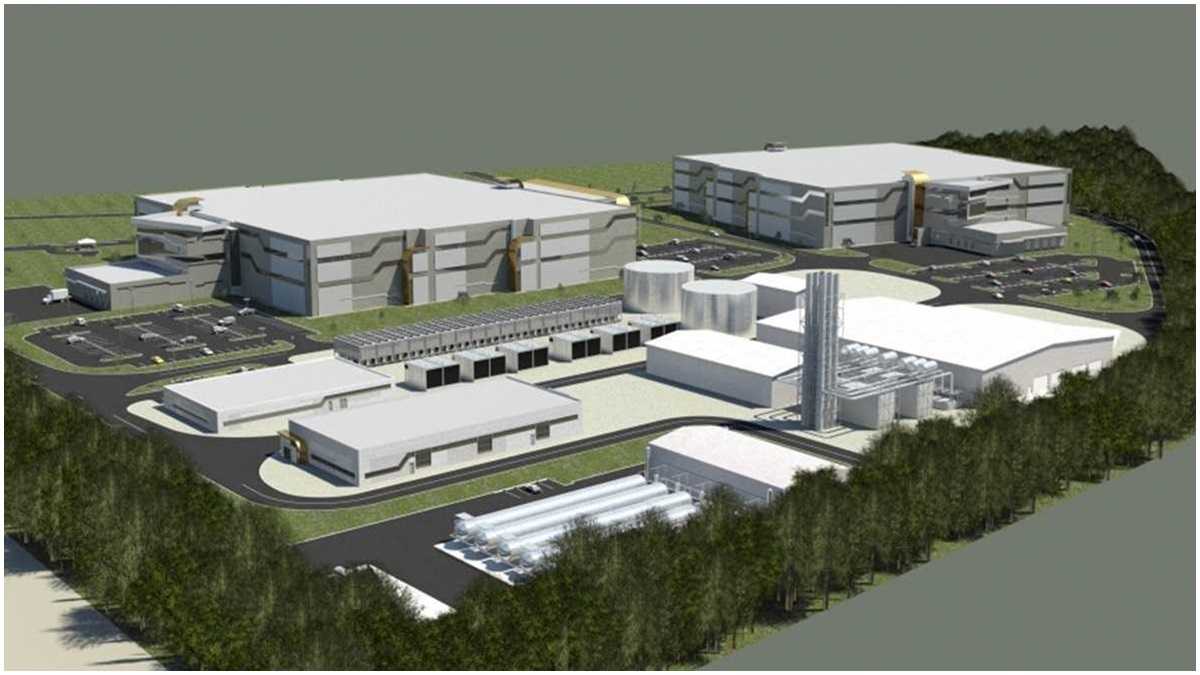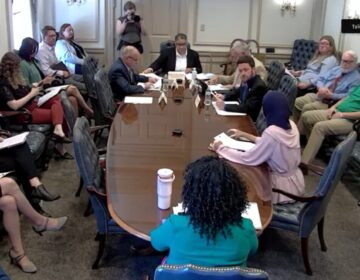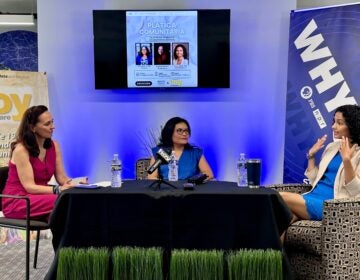Lessons learned from Univ. of Delaware’s data center debacle

Rendering of proposed data center and CHP (Photo courtesy of TDC)
A couple of weeks before the University of Delaware pulled the plug on a proposed data center, E. Eugene Kern, the man behind the controversial project, made a remarkably candid and accurate admission.
“We’ve done a poor job of verbalizing this project,” said Kern, president and CEO of The Data Centers, LLC, the company that made the proposal to the university. “It’s very hard to explain to people how we will operate this facility because we haven’t actually done it and we don’t know our [electrical] load requirements, so we can’t communicate it exactly.”
Under the plan as submitted, a Combined Heat and Power (CHP) cogeneration plant would have powered the data center on UD’s new Science Technology and Advanced Research campus.
As my conversation with Kern continued, he said he welcomed the review the university’s top brass had undertaken to decide whether to let the project go forward on the site of the old Chrysler assembly plant.
“I think they’re trying to figure out, ‘Did I come up with a nutty idea that’s never going to work, or is it, as my investors say, a wise business direction?'” he mused.
hen the university’s working group issued its report last week, it validated Kern’s first assertion. Yes, indeed, TDC had done a poor job of explaining its plan to create a $1.8 billion facility crammed with high-powered computer servers run by a 279-megawatt power system that would create its own electricity without relying on the conventional power grid.
And, while the UD team didn’t quite say that TDC had come up with a nutty idea that’s never going to work, the university made it quite clear that piling vague explanations on top of scant documentation to support a questionable business model is hardly the formula for selling a complex concept to a panel of top-notch, detail-oriented leaders of a major research university.
New life for the plan?
Kern’s initial reaction was to question whether UD could unilaterally kill the project and back out of the 75-year lease it had signed with TDC two years ago. He said TDC would still like to build a combination data center/power plant somewhere in Delaware.
TDC could certainly try. It might have the support of Gov. Jack Markell and his economic development director, Alan Levin, who will proclaim the urgent need to create “jobs, jobs, jobs” whenever they see a microphone.
And TDC can likely count on support from labor unions too. The unions, who would have benefited from the project’s construction jobs, made their support quite evident as they packed public meetings in Newark this spring and subsequently found a couple of lawmakers in Delaware’s General Assembly who were willing to play hardball on their behalf, by toying with the university’s state budget appropriation and Newark’s Alderman’s Court.
But the university’s report contains some language that government officials throughout Delaware would do well to heed should TDC come knocking at their door. After looking at the application for an air quality emissions permit filed with the state Department of Natural Resources and Environmental Control, the UD team observed, “if the air permit application can be assumed to exemplify overall quality of the facility plans, and its eventual operation, there is doubt as to whether this will be a first-class installation consistent with the University’s vision for the campus.”
Should TDC try to locate anywhere in Delaware, it will need an air quality permit from DNREC. And UD has put DNREC on notice: This plan has flaws, quite possibly serious flaws. Put the rubber stamp back inside the desk —and keep it there.
Many people following the controversy anticipated that UD’s working group would issue a report that would provide the university with some cover while letting the project proceed. Opponents were hoping, at best, that UD would establish new parameters for the project, forcing TDC to clarify or modify its plans before going ahead.
UD did much more.
By killing the TDC proposal, UD has likely rendered moot both the air quality permit hearings and a pending court case involving zoning for the project, saving state agencies, the city of Newark and the court system thousands of hours and taxpayer dollars.
Eventually there will be a data center on the STAR campus. UD considers that an essential piece of its master plan. But whoever wants to operate it now has fair warning: Come prepared to explain your plans clearly and, even better, give us proof that you’ve done it before, and done it well.
Larry Nagengast is a writer-editor who first reported on the University of Delaware in the 1970s. You can email him: larry@wordsworkforyou.com.
WHYY is your source for fact-based, in-depth journalism and information. As a nonprofit organization, we rely on financial support from readers like you. Please give today.




